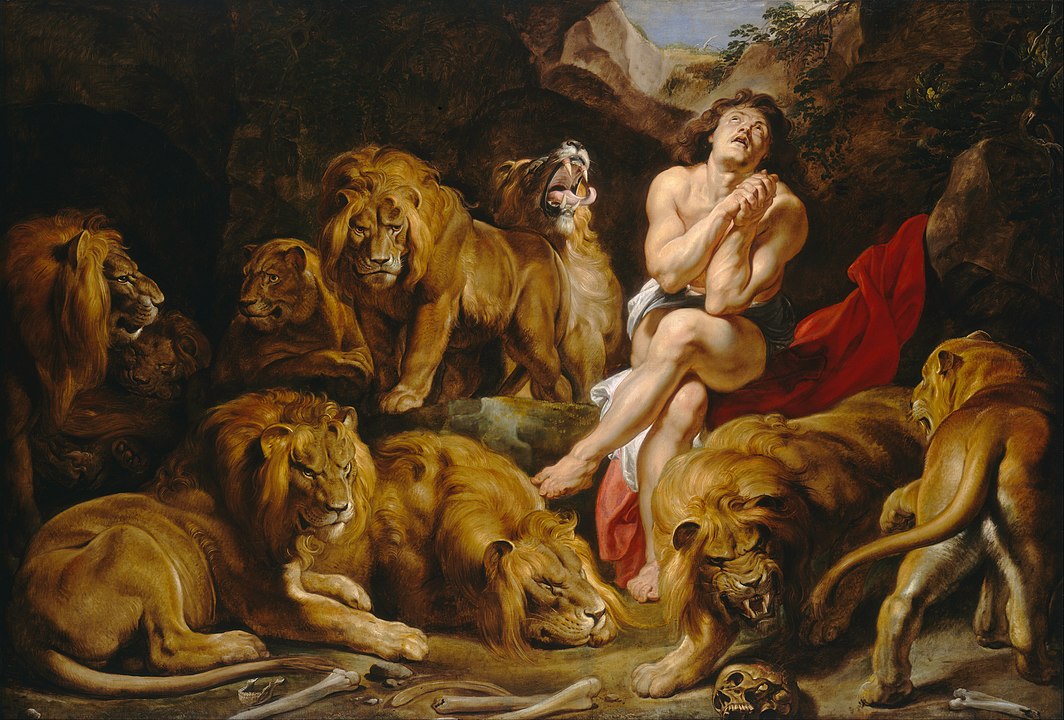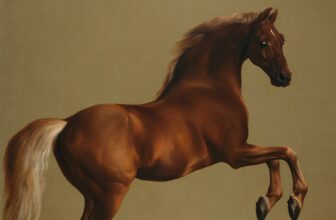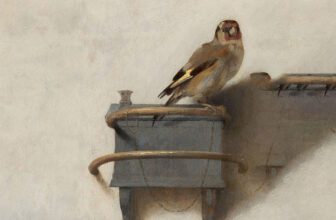
Miracle of Daniel in the Lions’ Den Painting by Peter Paul Rubens
Few biblical scenes have captured the imagination of artists quite like the story of Daniel in the Lions’ Den. From the pages of the Old Testament to the canvases of the Renaissance and Baroque masters, Daniel’s miraculous survival amid savage beasts has served as a visual metaphor for divine protection, spiritual courage, and unwavering faith. One of the most striking renditions of this narrative is the oil painting by the Flemish master Peter Paul Rubens, a towering figure of Baroque art. His version, Daniel in the Lions’ Den, completed around 1614–1616, stands out not only for its technical brilliance and emotional intensity but also for its profound symbolic depth.
In this detailed analysis, we will explore what Rubens’ painting is all about, how it was created, the historical and religious symbolism it carries, what is visually happening in the scene, the artistic style employed, and finally, the painting’s current home and legacy.
The Story Background
The story depicted in the painting originates from the Book of Daniel, chapter 6, in the Old Testament. Daniel, a Hebrew exile in Babylon, rises to a high position in the court of King Darius. However, his steadfast faith in God and his habit of praying three times a day anger other officials. In a calculated political move, they trick the king into issuing a decree that anyone who prays to any god or man other than the king shall be thrown into a den of lions.
Daniel is caught praying and is sentenced to death. Yet, miraculously, he survives the night in the lions’ den. The next morning, King Darius rushes to the den and finds Daniel unharmed. Daniel explains that God sent an angel to shut the lions’ mouths. The story ends with Daniel being lifted out of the pit and his accusers being thrown into it instead.
This narrative is a parable of divine justice, courage under persecution, and the triumph of righteousness over evil. These elements are captured with rich visual drama in Rubens’ interpretation.
Who Was Peter Paul Rubens?
Before diving into the painting itself, it is essential to understand the man behind the brush. Peter Paul Rubens (1577–1640) was a Baroque master from what is now Belgium. Rubens was more than just a painter; he was also a diplomat, scholar, and polyglot. Known for his grand, theatrical style, Rubens often worked on religious, mythological, and allegorical subjects, infused with motion, sensuality, and emotional intensity.
Trained in Antwerp and deeply influenced by Italian Renaissance masters such as Michelangelo, Raphael, and Caravaggio, Rubens brought together Northern European precision with the dramatic flair of the Italian Baroque. His workshop was one of the most productive in Europe, employing numerous assistants and pupils, yet many of his greatest works were completed by his own hand.
What Is Daniel in the Lions’ Den All About?
At first glance, Daniel in the Lions’ Den might appear as a mere depiction of a biblical miracle, but it’s much more than that. This painting is a meditation on faith, innocence, divine justice, and the fragility of human existence. It explores the vulnerability of man in the face of mortal danger, and the possibility of redemption through unwavering spiritual conviction.
In Rubens’ painting, we see a youthful, muscular Daniel kneeling in prayer, his eyes turned heavenward, seemingly untouched by the deadly predators that surround him. The lions, though enormous and rendered with near-anatomical accuracy, appear calm. Their deadly nature is undeniable, but they are subdued, almost contemplative, as if under some divine spell. This juxtaposition of threat and serenity is central to the meaning of the painting.
How and When Was It Painted?
Daniel in the Lions’ Den was painted around 1614–1616. At this time, Rubens was flourishing in his career, having returned from his time in Italy and established his large studio in Antwerp. The piece was likely a private commission, possibly for a noble patron or as a diplomatic gift, a common practice among artists of his stature.
Rubens was deeply committed to anatomical study and natural realism. For this work, he reportedly studied live lions in the royal menagerie in Brussels, taking detailed sketches to ensure realism. This meticulous preparation allowed him to render the lions with astounding muscularity and realism, a stark contrast to earlier medieval or Gothic representations where lions were more symbolic and less naturalistic.
The medium is oil on canvas, and the painting is large in scale, a characteristic feature of Baroque compositions meant to awe the viewer and evoke emotional engagement.
What Is Happening in the Daniel in the Lions’ Den Painting?
The scene Rubens chooses to depict is not the moment of judgment or Daniel’s sentencing, but rather the aftermath of divine intervention, the moment when Daniel has already survived the night, and the miracle is fully evident.
Daniel kneels in the center of the composition, surrounded by at least a dozen lions. His arms are crossed over his chest in a gesture of prayer or submission to divine will. His expression is serene, even grateful, highlighting his unshaken faith. There’s no visible terror in him, only calm resolve and reverence.
The lions vary in posture: some recline in rest, others gaze directly at the viewer or out into the distance. None seem to be aggressive. This decision was likely deliberate on Rubens’ part. By showing the beasts at rest, he emphasizes not Daniel’s heroism, but the miracle itself, that nature has been subdued by divine command.
The light in the painting is another key element. Daniel is bathed in a warm, divine glow that sets him apart from the dark, earthy tones of the lions and cave. This chiaroscuro effect, inspired by Caravaggio, reinforces the idea of spiritual illumination versus physical darkness.
Symbolism and Deeper Meaning
1. Daniel as a Christ-like Figure
Daniel is often interpreted as a prefiguration of Christ. Like Jesus, he is innocent, unjustly condemned, and survives death by divine will. His time in the lions’ den parallels Christ’s three days in the tomb. The posture of Daniel, arms crossed and eyes upward, echoes traditional depictions of saints and martyrs.
2. Lions as Symbols of Power and Judgment
In many cultures, lions symbolize strength, dominance, and regal authority. Here, they represent the forces of death and earthly power, neutralized by divine intervention. Their subdued demeanor signifies the triumph of spiritual power over physical force.
3. Light as Divine Presence
The use of light streaming into the den is symbolic of God’s presence, offering both protection and sanctification. The light does not just illuminate Daniel; it glorifies him.
4. Nudity and Innocence
Daniel is partially nude in the painting, a controversial choice for a biblical hero. But this is not sensual nudity; it is classical and symbolic. It suggests purity, vulnerability, and a return to the innocence of Eden. Daniel’s physical perfection reinforces his moral and spiritual integrity.
The Artistic Style: High Baroque
Rubens was a master of the Baroque style, and Daniel in the Lions’ Den is a textbook example of the movement’s key traits:
Drama and Movement: Though the scene is quiet, the swirling composition, musculature of the lions, and light effects create dynamic tension.
Realism and Emotion: Rubens’ attention to anatomical detail and facial expression captures both realism and profound emotion.
Grand Scale: The painting is imposing, meant to overwhelm the viewer with its power and beauty.
Use of Light and Dark: The strategic use of light draws attention to the painting’s emotional core, Daniel’s faith.
The piece also shows influence from Italian Renaissance masters and Classical sculpture, both of which Rubens studied extensively during his travels.
Where Is the Daniel in the Lions’ Den Painting Today?
Daniel in the Lions’ Den is currently housed in the National Gallery of Art in Washington, D.C., part of the Samuel H. Kress Collection. It was acquired in the 20th century and remains one of the gallery’s standout Baroque works.
The painting is displayed prominently, allowing visitors to fully appreciate its scale, detail, and emotional intensity. It
Peter Paul Rubens’ Daniel in the Lions’ Den is far more than a biblical illustration, it is a profound visual sermon on the power of faith, the mystery of divine grace, and the triumph of spiritual conviction over mortal peril. Through his masterful composition, Rubens manages to capture the quiet majesty of a miracle: a man who should be dead, alive and unharmed, not by his own strength, but by the will of a higher power.
Every element, the realistic lions, the divine light, the prayerful figure of Daniel, works in harmony to convey this message. It is a painting that speaks across centuries, reminding us of the eternal human yearning for justice, protection, and meaning amid chaos.
As we stand before this masterpiece today, in the National Gallery of Art, we are not just viewers, we are witnesses to the eternal dialogue between heaven and earth, between flesh and spirit, between man and the divine. And in that silence, filled only by the brushstrokes of Rubens and the roars that never came, we find hope.




